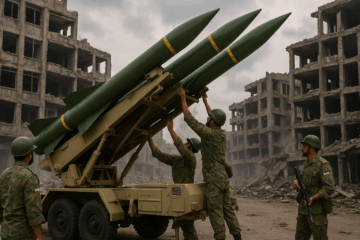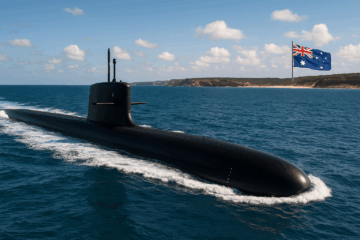The Conference on Disarmament for the United Nations met on March 18th, 2024. Sixty-five member states were in attendance, including nuclear powers such as China, France, India, Israel, Pakistan, Russia, the UK, and the US. This meeting highlights ongoing global efforts toward nuclear disarmament and the complexities of maintaining nuclear deterrence while still supporting disarmament. Although eight of the nine nuclear weapon states attended the conference on disarmament, every nuclear weapon state is known to be pursuing modernization and technological advancements of some kind.
Furthermore, the discourse surrounding most disarmament discussions involves the United States leading by example in fulfilling its disarmament commitments under the Nuclear Non-Proliferation Treaty (NPT), with the expectation that other nuclear-armed states will emulate this action. However, this is an unrealistic expectation. Expecting other nuclear-armed states to follow the United States in disarmament is like expecting a group of competitive athletes to slow down to match the pace of the slowest runner.
The Perilous Vacuum
The fact is, the American nuclear deterrent is the cornerstone of national security strategy. It is designed to deter both nuclear and conventional attacks against the United States and its allies. The credibility of this deterrent is based on the perception that the United States has the capability and the will to use its nuclear weapons, if necessary.
This perception is reinforced by the United States’ strong commitment to its allies and its willingness to defend them against aggression. The mere existence of a nuclear-armed United States serves as a powerful deterrent against potential adversaries, dissuading them from pursuing aggressive actions that could escalate into catastrophic conflicts.
However, the prospect of a world without American nuclear deterrence is a chilling one. The balance of power would shift dramatically, and the risk of conflict and devastation would soar.
If the US followed through on abolitionist desires and disarmed, adversaries would pounce on the opportunity to exercise their expansionist goals and flex their militaristic ambitions. First and foremost, the absence of an American nuclear deterrent would create a dangerous power vacuum, inviting aggression from ambitious states and opportunistic actors.
One example of this is seen in the case of North Korea. Despite facing international sanctions and condemnation, North Korea continues to pursue advancements in its nuclear weapons program. The regime in Pyongyang views nuclear weapons as essential for its survival and a means to deter the United States and South Korea.
If the United States no longer possessed a credible nuclear deterrent, North Korea might feel emboldened to take aggressive action such as direct military aggression against South Korea. This would lead to all-out war on the Korean Peninsula.
The presence of an American nuclear deterrent helps to prevent such a scenario by making it clear to North Korea that any aggressive actions will be met with a swift and overwhelming response. Without this deterrent, rogue states like North Korea could be more inclined to pursue their expansionist agendas, leading to increased tensions and the potential for conflict in regions of strategic importance.
The Erosion of the Nuclear Taboo
Furthermore, the absence of an American nuclear deterrent erodes the credibility of the nuclear taboo, the unwritten norm that nuclear weapons should not be employed. The fear of nuclear retaliation by the United States has long served as a potent force in preventing the use of nuclear weapons. Without this fear, the threshold for nuclear use is lower, increasing the likelihood of nuclear warfare and the unimaginable human suffering it would entail.
States such as Russia would no longer fight wars of attrition on its borders with lesser military powers, such as Ukraine, if a taboo against nuclear first use disappears. Russia could force capitulation through the use of nuclear coercion and/or employment. This is a worst-case scenario and likely a primary reason why the US is hard pressed to ignore Article VI of the Nuclear Non-proliferation Treaty and preserve its nuclear deterrent into the foreseeable future—despite abolitionist ambitions.
Moreover, a world without American nuclear deterrence will likely see the proliferation of nuclear weapons to additional states. Absent an American deterrent, countries that feel threatened by their neighbors, no longer protected under by an American nuclear umbrella, may seek to acquire nuclear weapons.
This proliferation would further destabilize the international system, increasing the risk of nuclear conflict and the catastrophic consequences that would follow. That is unless Kenneth Waltz was right and that a world with more nuclear weapons is a safer world.
Conclusion
Ultimately, the prospect of a world without an American nuclear deterrent is a daunting one, where the balance of power shifts dramatically to authoritarians, and the risk of conflict and devastation escalate. Thus, it is essential for the United States to maintain a strong and credible nuclear deterrent.
To accomplish this, the US must craft convincing narratives regarding the capability, intent, and credibility of its nuclear arsenal. Despite abolitionist ambitions, the continued presence of an American nuclear deterrent remains vital in deterring aggression, preventing conflict, and preserving stability in an increasingly complex and dangerous world.
 |
Aaron Holland is an Analyst at the National Institute for Deterrence Studies. The views expressed in this article are the author’s own |
About the Author

Aaron Holland
Aaron Holland is an Analyst at the National Institute for Deterrence Studies.





Aaron Holland has penned another percipient thought-piece on the vital importance of the U.S. modernizing with urgency our nuclear deterrent’s full triad and all supporting infrastructure. In this article he focuses on the sheer folly of still clinging — in today’s increasingly violent, multipolar, multi-nuclear world — to the utopian delusion of all of humanity abandoning forever all nuclear arms. To do that, methinks, would leave the world wide open to exactly the sort of years-long industrialized slaughterfests of the 20th century, updated to the 21st, that the Atomic Age has helped us escape through a balance of nuclear power between sides. Worse, a bloody, massively destructive conventional World War III would certainly bring on “Super (Fusion Bomb) Manhattan Projects” among all the major combatants. Then, during such another global conventional shooting war, when restraint and international law are already worn past the breaking point, the first belligerent to get H-bombs would surely use them — precipitating the very nuclear holocaust that “abolition” was meant to avoid! Far better to sustain a nuclear deterrence status quo, of approximate parity, between democracies and dictatorships.